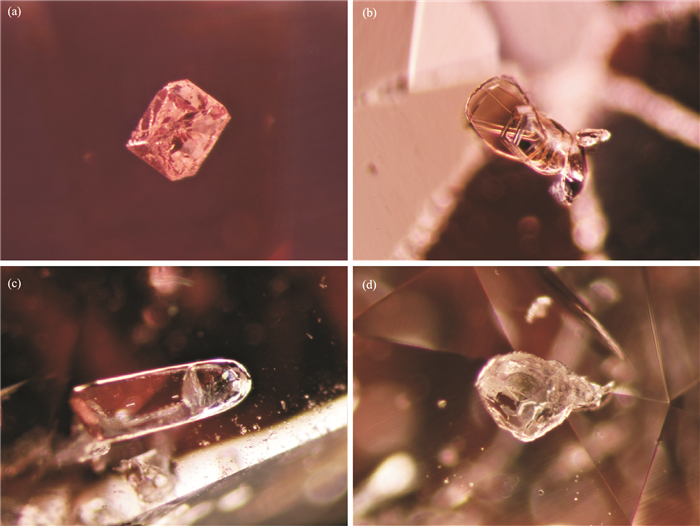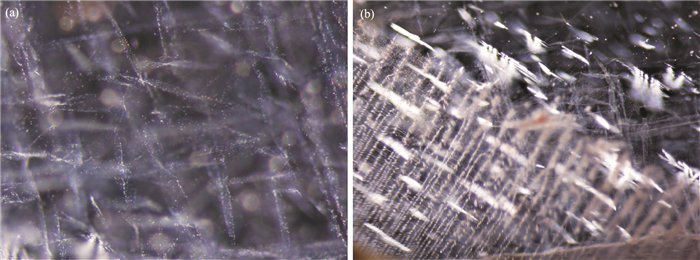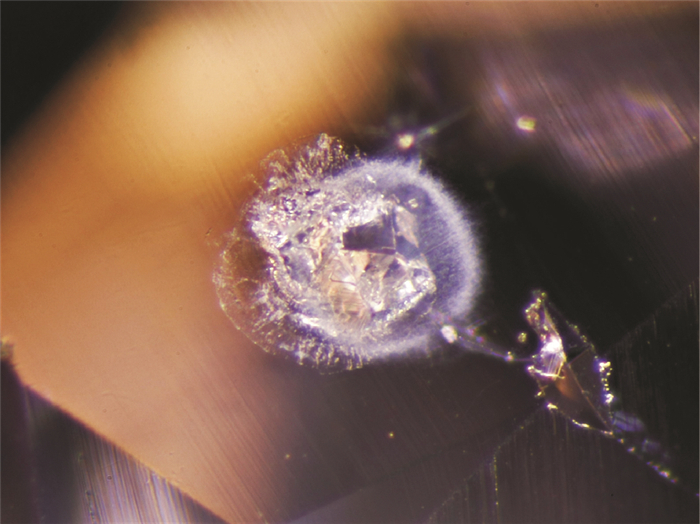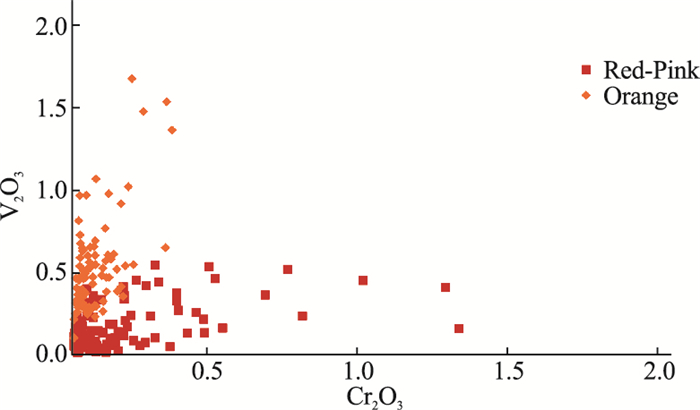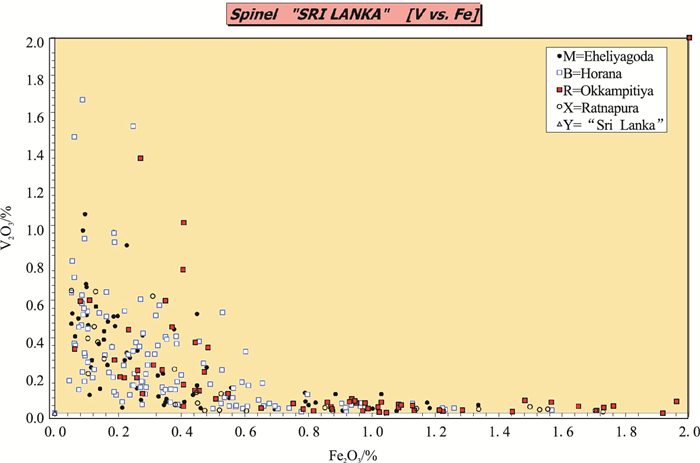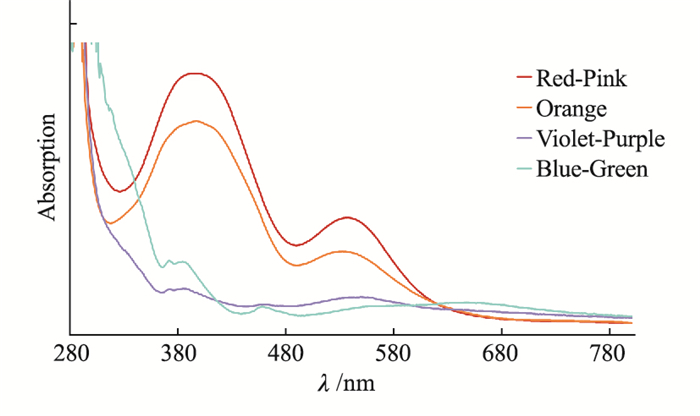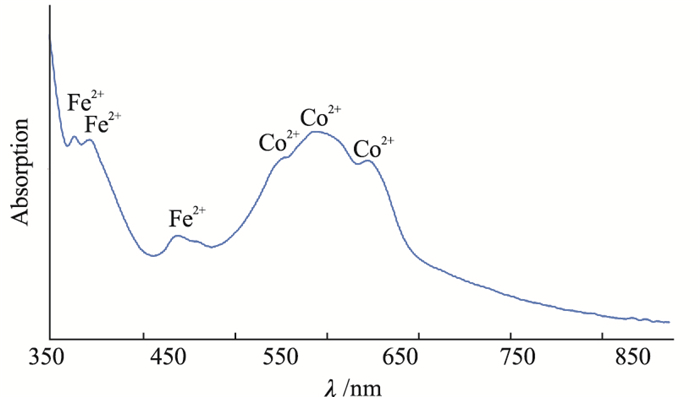-
Abstract:
Detailed mineralogical and gemological records were conducted on 340 unheated spinels from the Horana, Eheliyagoda, Ratnapura, and Okkampatiya mining areas in Sri Lanka. The color of Sri Lankan spinel varies greatly: in addition to the mainstream pink to purple pink, green and blue can also be seen. Compared with spinel from other regions such as Myanmar, Vietnam, and Tanzania, Sri Lanka's spinel has more abundant inclusions: several mining areas generally have inclusions such as dolomite, apatite, zircon, and chondrodite. Minerals such as graphite and forsterite are also found in spinel produced in the Horana region; graphite and rutile have been found in spinel produced in the Okkamptiya region. Partially healed fissures are most common in spinel in the Okkampatiya mining area; Unlike Vietnamese spinel, dislocations and growth structures are almost absent in Sri Lankan spinel. The LA-ICP-MS analysis results showed that there were no significant differences among the mining areas. LA-ICP-MS analysis of 5 Sri Lankan cobalt blue spinels showed a variation of 11 to 120 ppm in this chromogenic element. The UV visible absorption spectrum results show that Sri Lankan spinel has a combination spectra with variable ratios of the spectral components Cr3+, V3+ and Fe2+ from pink to red, orange, purple to purple, and blue-green. The results of infrared spectroscopy and laser Raman spectroscopy analysis showed that all samples showed no indications for heat treatment.
-
Keywords:
- gemological-mineralogical characteristic /
- spinel /
- Sri Lanka /
- spectroscopy /
- inclusion
-
ACKNOWLEDGMENTS: The authors would like to thank the ICA GemLab, for carrying out the analyses, photos and general documentation.
-
Figure 1. Crystal structure of ordered spinel (Kefeni & Mamba, 2019)
Figure 2. (a) Well-developed (octahedral), colorless-transparent spinel crystal hosted by a Horana spinel; (b) Orangey-brown, transparent, irregular-rounded crystal of unknown natural hosted by a Horana spinel; (c)Colorless-transparent, elongated-prismatic, rounded apatite crystal; (d)Colorless-transparent irregular rounded dolomite crystal.
Figure 3. (a) Partially healed fissure with coarse textures, these mostly composed of isolated/elongated (tube-like) constituents. Typical network- or fingerprint-like patterns are not developed; (b)Partially healed fissure showing the typical spinel pattern. This is composed of innumerable, grayish white, octahedron-like cavities ("negative crystals"). They are arranged in parallel strings that are oriented in different directions. Many cavities are accompanied by tiny tension fissures that are oriented parallel to each other.
Figure 4. (a) Well-developed, colorless-transparent, octahedron-like negative crystals; (b)Swarm of irregular shaped cavities (negative crystals)accompanied by planar, partially healed fissures; (c) Very common in Okkampitiya spinels are irregularly shaped (often bizarre-looking) cavities, accompanied by unhealed-frosted or poorly healed fissures. These cavities often contain a polycrystalline minerals substance. Also present are small, black-opaque platelets/grains.
Figure 5. (a) Stringer-like formations are a common inclusion feature in Okkampitiya spinels. They are composed of tiny, grayish pinpoint inclusions and reflective particles; (b) Stringer-like formations are straight and oriented nearly parallel to each other. Also present are delicate planar, highly reflective tension fissures that are oriented parallel to each other and perpendicular to the strings.
Table 1 Overview of the mineral inclusions regarding Sir Lanka spinels from different location
Minerals [1]-R [1]-H [1]-O [1]-E [2] [3] Minerals [1]-R [1]-H [1]-O [1]-E [2] [3] Alanite + Hogbomit + Albite + K-feldspa + + Ankerite + Llimonite + Apatite + + + + + "Magnesite/" + Aragonite + Rhodochrosite Biotite + Paragonite + Boehmite + Phlogopite + Calcite + + + + Plagioclase + Chondrodite + + + Pyrite + + Clinochrorite + Pyrrhotite + Diaspore + Quartz + + Diopsite + Rutile + + Dolomite + + + + + Silimanite + Feldspar + Sphene + Florencite + Spinel + Forsterite + + Sulfide * Graphite * * * * + Uraninite + Hematite + Zirco + + + + + Hercynite + Zoisite + [1] This study using Raman Microspectroscopy (*identified by optical microscopy). [2] Gubelin & Koivula (1986 and/or 2005). [3] Kleismantas et al. (2017) using SEM.R = Ratnapura, H = Horana, O = Okkampitiya, E = Eheliyagoda Table 2 Chemical fingerprinting of the spinels examined for this study using EDXRF-data
wt/% Locality Color V2O3 Cr2O3 Fe2O3 ZnO Eheliyagoda Pink-Red 0.04-0.89 0.03-0.66 0.11-0.55 0.04-1.55 Orange 0.10-1.06 0.01-0.17 0.05-0.48 0.02-1.35 Purple-Violet 0.01-0.15 0.01-0.22 0.21-1.33 0.08-0.78 Blue-Green 0.01-0.02 bdl-0.01 0.69-1.18 0.06-0.47 Horana Pink-Red 0.02-1.67 0.01-1.32 0.05-1.57 0.03-3.42 Orange 0.25-0.96 0.01-0.32 0.05-0.60 0.05-1.11 Purple-Violet 0.02-0.08 bdl-0.09 0.21-1.23 0.05-0.97 Blue-Green 0.01-0.07 0.06-0.99 0.21-2.08 0.13-3.92 Okkampitiya Pink-Red 0.01-1.36 0.06-0.99 0.21-2.08 0.02-1.36 Orange 0.23-0.76 0.03-0.17 0.06-0.48 0.05-1.71 Purple-Violet bdl-0.10 0-0.15 0.41-1.92 0.04-0.37 Blue-Green bdl bdl 1.04-3.38 0.47-1.53 Ratnapura Pink-Red 0.01-0.23 0.01-0.20 0.38-0.88 0.05-0.61 Orange 0.21-0.65 0.01-0.08 0.05-0.31 0.05-0.61 Purple-Violet 0.01-0.03 bdl-0.09 0.47-2.35 0.06-0.62 Blue-Green 0.01-0.02 0-0.02 0.60-5.04 0.07-3.54 Ga2O3 content = 0.01-0.13 wt.%, MnO content = bdl-0.11 wt.% -
[1] Fernando, G. W. A. R., Attanayake, A. N. B., Hofmeister, W. (2005). Corundum-spinel-taafeite-scheelite bearing metasomatites in Bakamuna, Sri Lanka: Modeling of its Formation. Gem-Materials and Modern Analytical Methods, Proceedings of the International Symposium, Hanoi, September 26-October 2, 2005: 117-122.
[2] Fernando, G. W. A. R., Hofmeister, W. (2000). Origin of some gem minerals in Sri Lanka: Evidence from corundum-spinel-scheelite-taaffeite-bearing rocks. OUSL Research Repository. http://repository.ou.ac.lk/handle/123456789/111.
[3] Garnier, V., Giuliani, G., Ohnenstetter, D., et al. (2008). Marble-hosted ruby deposits from Central and South-East Asia: Toward a new genetic model. Ore Geology Reviews, 34: 169-191. doi: 10.1016/j.oregeorev.2008.03.003
[4] Giuliani, G., Fallick, A. E., Boyce, A. J., et al. (2017). Pink and red spinels in marble: Trace elements, oxygen isotopes, and sources. The Canadian Mineralogist, 55: 743-761. doi: 10.3749/canmin.1700009
[5] Gorghinian, A., Mottana, A., Rossi, A., et al. (2013). Investigating the colour of spinel: 1. red gem-quality spinels ("balas") from Ratnapura (Sri Lanka). Rendiconti Lincei, Scienze Fisiche E Naturali, 24(2): 127-140. doi: 10.1007/s12210-013-0223-7
[6] Gübelin, E. J., Koivula, J. I. (1986). Photoatlas of inclusions in gemstones, Vol. 1. ABC Edition Zürich, Switzerland: 532.
[7] Gübelin, E. J., Koivula, J. I. (2005). Photoatlas of Inclusions in Gemstones, Vol. 2. Opinio Publishers, Basel, Switzerland: 829.
[8] Henn, U. (2013). Praktische Edelsteinkunde, 3ed. Auflage: 246.
[9] Huong, L. T. T., Hager, T., Hofmeister, W., et al. (2012). Gemstones from Vietnam: An update. Gems & Gemology, 48(3): 158-176.
[10] Kefeni, K. K., Mamba, B. B. (2019). Photocatalytic application of spinel ferrite nanoparticles and nanocomposites in wastewater treatment: Review. Sustainable Materials and Technologies, 23(4): e00140.
[11] Kleismantas, A., Zoysa, G. E., Edward, L.S.I. (2017). Chemistry and gemological features of spinels from Sri Lanka and Vietnam. 35th IGC, Windhoek, Namibia: 148-150.
[12] Kriegsman, L. M., Schumacher, J. C. (1999). Petrology of Sapphirine-bearing and Associated Granulites from Central Sri Lanka. Journal of Petrology, 40(8): 1 211-1 239. doi: 10.1093/petroj/40.8.1211
[13] Malsy, A., Klemm, L. (2010). Distinction of gem spinels from the Himalayan Mountain Belt. Chimia, 64(10): 741-746. doi: 10.2533/chimia.2010.741
[14] Malsy, A. K., Karampelas, S., Schwarz, D., et al. (2012). Orangey-red to orangey-pink gem spinels from a new deposit at Lang Chap (Tan Huong Truc Lau), Vietnam. The Journal of Gemmology, 33(1-4): 19-27.
[15] Peretti, A., Kanpraphai-Peretti, A., Gunther, D. (2015). World of magnificent spinel: Provenance and identification. Contributions to Gemmology, 11: 293.
[16] Phyo, M. M., Bieler, E., Franz, L., et al. (2019). Spinel from Mogok, Myanmar-A detailed inclusion study by Raman microspectroscopy and scanning electron microscopy. The Journal of Gemmology, 36(5): 418-435. doi: 10.15506/JoG.2019.36.5.418
[17] Saeseaw, S., Wang, W., Scarratt, K. (2009). Distinguishing heated from unheated natural spinels. GIA. http://www.giathai.net/pdf/Heated_spinel_Identification_March_2009.pdf.
[18] Webster, R. (1976). A study of the identification of gemstones, pearls, and ornamental minerals. 6th edition. Mcintosh Press: 209.



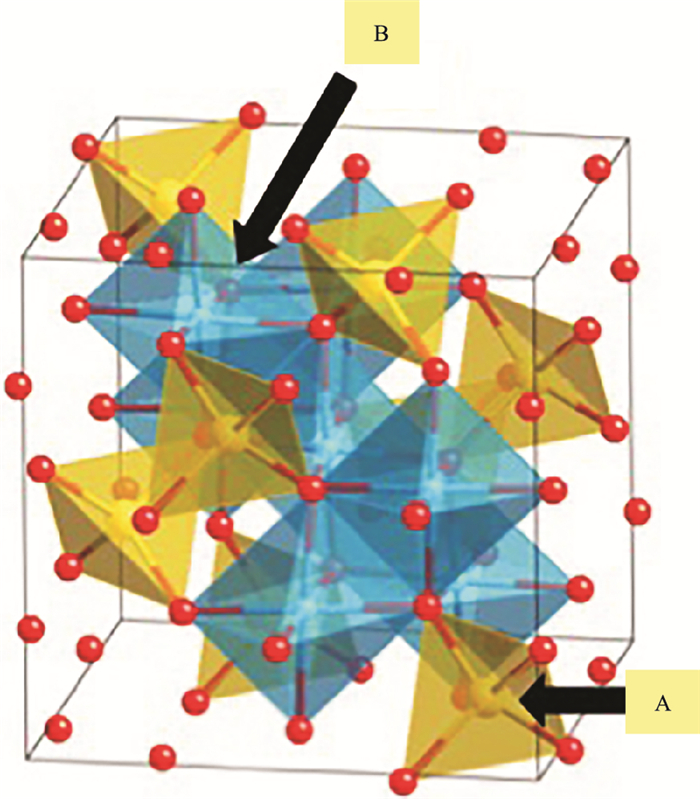
 下载:
下载:
